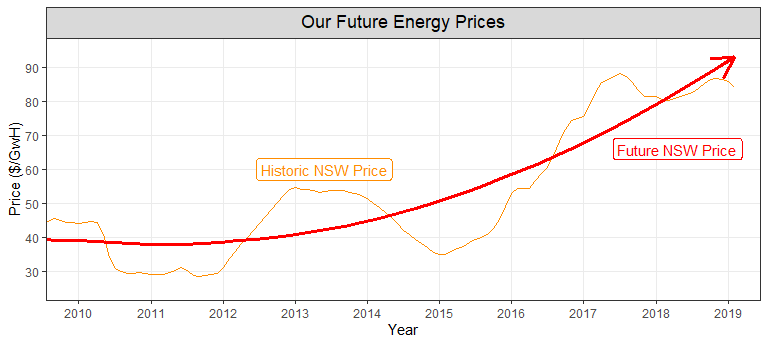In recent months, media outlets have notified the public about fluctuations in energy prices with headlines such as Australia’s High Electricity Prices the ‘New Normal’, Report Says (Hutchens, 2018), and Higher Energy Prices are Here to Stay — Here’s What We Can Do About It (Percival, 2018) and ‘No Likelihood of Relief Ahead’: Future Power Prices Continue to Rise (Latimer, 2018). These articles create a sense of concern due to the impact to Australian’s financial wellbeing. However, there is very little fact in these articles that are grounded in statistical evidence.
While these articles may have lacked academic rigour and rhetoric, the sentiment is still reflected in academic literature. Sardar (2015) justifies in his 2015 article entitled Research and Development, Welfare and Efficiency: An Australian Energy Perspective that increasing numbers of Australians are being driven to welfare as a direct result of Energy Prices. Moreover, in a 2017 article entitled Australian Energy Policy and Economic Rationalism, Horan et al. (2017) accuse the Australian Government of having irrational and inefficient energy policy, which is placing increasing and unnecessary financial pressure on Australian households and businesses. Furthermore, Lincoln (2012) proposes a succinct set of options for change which may curb this pressure, as articulated in the his article Options for Change in the Australian Energy Profile. As shown, the landscape of the Australian Energy Market environment is changing, and this trend may have dire consequences for the future of the Australian economy.
Therefore, with the intent to add some statistical rigour to the discourse around the Australian Energy Prices, this paper aims to model the aggregated monthly Energy Point Price in order to create a prediction of the for the future. The data is extracted from an Australian Government website, visualised, analysed, tested, and then forecast, in order to create such prediction. The resulting prediction will allow citizens to adequately plan for the future, and can also provide advice back to Governmental Agencies in order to advise future policy.
